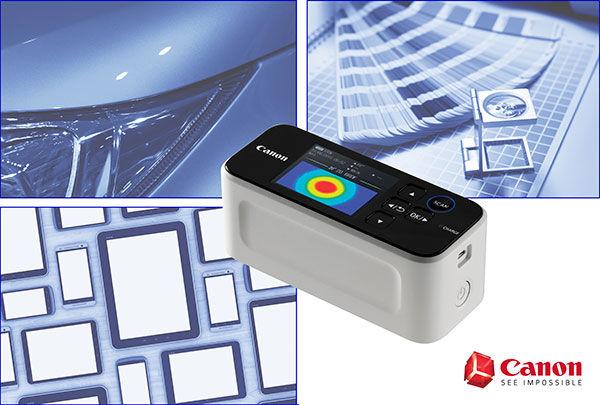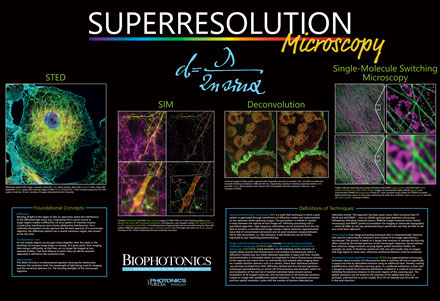|
Thursday, December 5, 2019 |
|

|
|
|

|
| sponsor |
 |
|
Plasmonics-Based Light Detector Could Support Precision Agriculture
A new, broad-spectrum photodetector that can be implemented on a single chip has been developed at Duke University. The photodetector spans a range of light frequencies by using on-chip spectral filters created with electromagnetic materials. The camera’s technology is based on plasmonics — the use of nanoscale physical phenomena to trap specific frequencies of light.
|
|
|
|
|
|
Tapered Optical Fiber Performs Multisite Photometry in the Brain
Researchers from Istituto Italiano di Tecnologia (IIT), the University of Salento, and Harvard Medical School have developed a light-based method to capture and pinpoint neural activity in the brain. The new method allows signals from various brain regions to be collected simultaneously through the use of a tapered optical probe.
|
|
|
|
|
|
 Canon Surface Reflectance Analyzer
Canon Surface Reflectance Analyzer
Canon U.S.A. Inc., Industrial Products Div.
Canon RA-532H, Surface Reflectance Analyzer (goniophotometer), is a compact, portable device capable of measuring 4 surface appearance conditions in a single pass: Gloss, Haze, Image Clarity (IC), and BRDF (Bidirectional Reflectance Distribution Function). Additionally, Canon has released its own new parameter, “Scattering” parameter, overcoming the shortage of both IC and DOI (Distinctiveness of Image) when evaluating matte and textured surfaces as well as orange peel surface.
Visit Website
Request Info
|
|
|
 Superresolution Microscopy Poster
Superresolution Microscopy Poster
Photonics Media
With interest in the superresolution microscopy field growing rapidly, the editors of BioPhotonics magazine — in collaboration with acknowledged experts — created a poster with readers in mind that is suitable for lab, classroom and office. It features visually stunning, high-resolution images that reveal never-before-seen worlds at the sub-cellular level, illustrating the value of the techniques.
Visit Website
Request Info
|
|
|
|
|
|
Liquid Crystal Microlenses Enable 4D Imaging
Researchers from Nanjing University have developed a portable, inexpensive, and easy-to-use microlens to acquire 4D images. 4D imaging provides 3D resolution as well as polarization information. Wei Hu, Yan Qing Lu, and colleagues used liquid crystals, materials found in most electronic displays. With a self-assembly process, they patterned arrays of liquid crystal microlenses into concentric circles.
|
|
|
|
|
|
Clear, Conductive Coating Could Protect Solar Cells, Display Screens
MIT researchers have improved on their initial version of a transparent, conductive coating material for solar cells and touch screens, producing a tenfold gain in its electrical conductivity. The high-performing, flexible material, an organic polymer known as PEDOT, is deposited in an ultrathin layer just a few nm thick, using an oxidative chemical vapor deposition (oCVD) process.
|
|
|
|
|
|
Edmund Optics Announces 2019 Educational Award Recipients Read Article
Harvard, MIT, Duke, US Army Team Up on Terahertz Technology Read Article
Lynred Delivers IR Detector to MicroCarb Read Article
SUSS MicroTec and BRIDG Establish New Applications Center in North America Read Article
System Uses Artificial Intelligence for Placental Analysis Read Article
|
|
|
|
A3 Business Forum 2020
January 13-15, 2020 - Hilton Orlando Bonnet Creek - Orlando, Fla.
The A3 Business Forum is the world’s leading annual networking event for robotics, vision and imaging, motion control, and motor professionals. The A3 Business Forum 2020 will give attendees the opportunity to meet with current and potential new suppliers; attend sessions covering topics ranging from the latest in automation to best practices; and network with more than 600 industry professionals. Attendees at the A3 Business Forum are leaders in the automation industry. They are from a broad range of companies including automation manufacturers, integrators, suppliers, and end users.
|
|
|
|
Vision Systems for Deep Learning
Thu, Dec 12, 2019 1:00 PM - 2:00 PM EST
Algorithms for artificial intelligence are improving rapidly. In the medical and life sciences fields, in particular, many classification problems that were once considered to be “nonsolvable” by machines can now be solved with an impressive level of accuracy and robustness. This webinar, presented by Basler, will give you an overview of three different types of vision systems that can be used to deploy a trained neural network in the medical and life sciences fields: Embedded; PC-based; and FPGA-based. The webinar will discuss how these system architectures differ in their total cost of ownership, in the engineering effort required to deploy them, and in overall system performance.
|
|
|
|

CALL FOR ARTICLES
Photonics Media is currently seeking technical feature articles on a variety of topics for publication in our magazines (Photonics Spectra, BioPhotonics, Vision Spectra, and EuroPhotonics). Please submit an informal 100-word abstract to editorial@Photonics.com, or use our online submission form.
|
|
|
|
 |
|